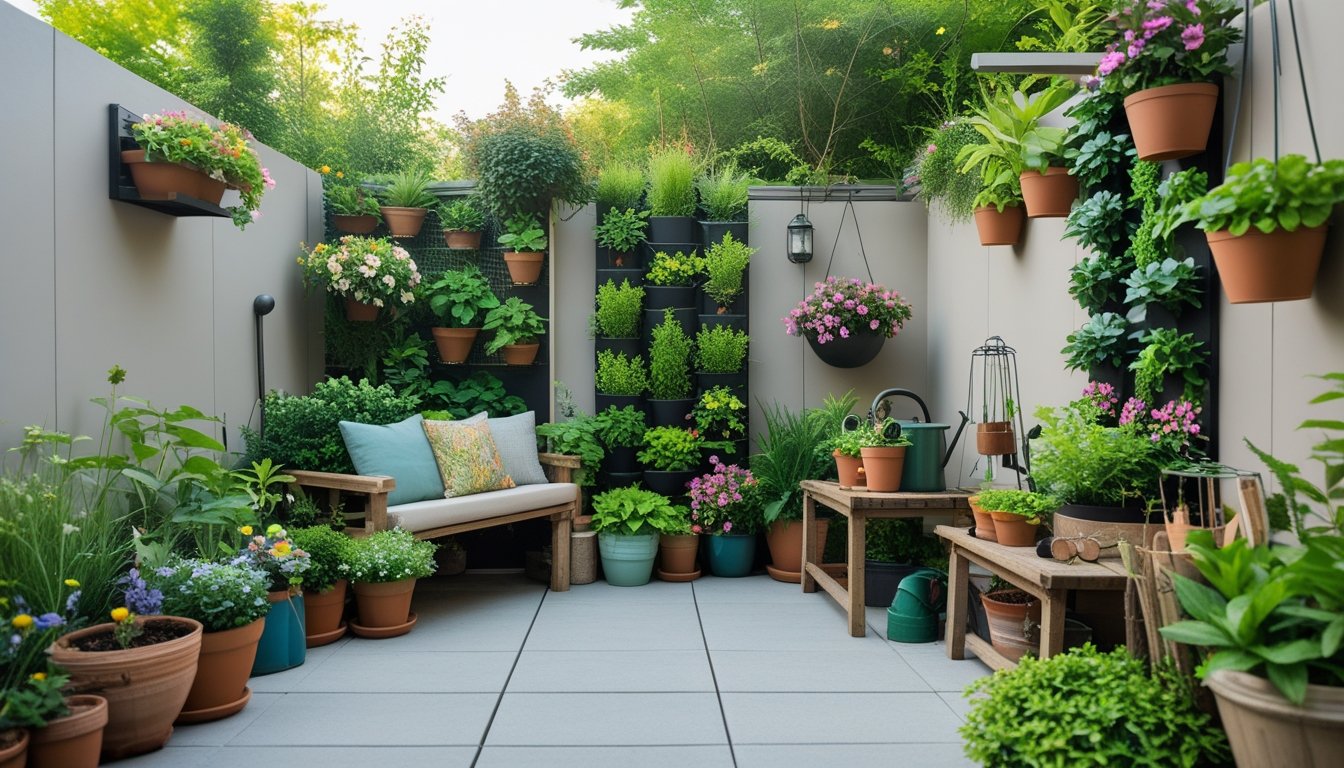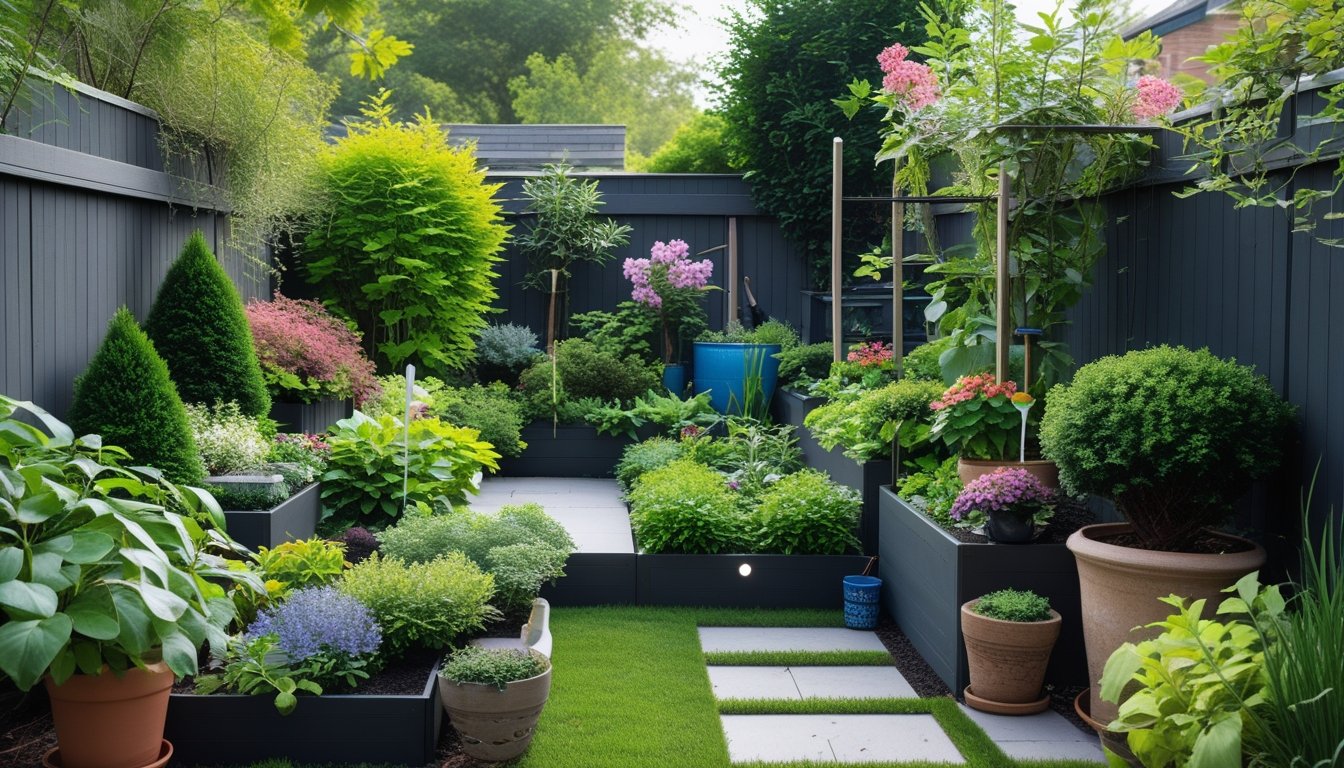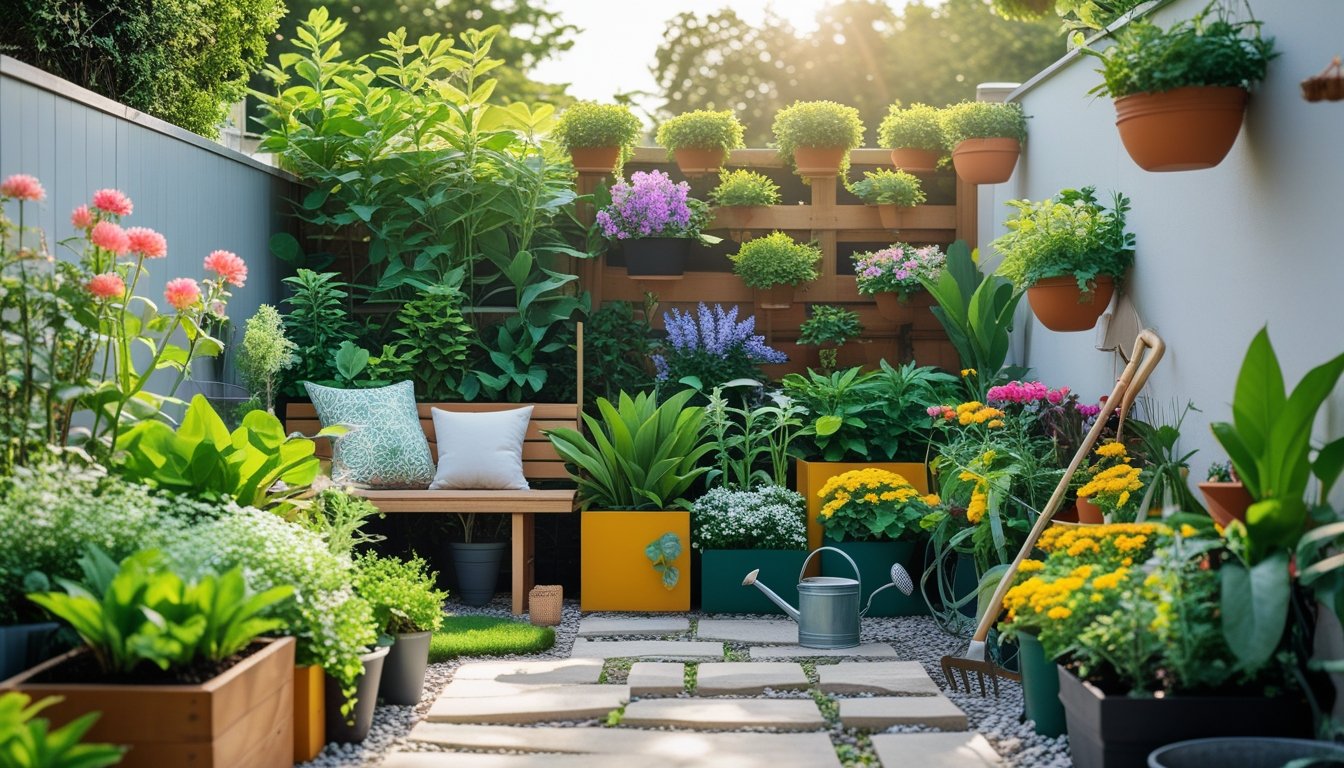Late updated: 12 Aug 2025 13:08
Written by: Daniel Harper
Tips For Enhancing Small Garden Spaces: Expert Strategies For Maximising Potential
Transforming a small garden into a vibrant and functional space can feel like a daunting task. With a bit of creativity and strategic planning, even the tiniest spots can become lush retreats. Maximising space through vertical planters, clever layout ideas, and multi-purpose features can turn a limited outdoor area into a green paradise.

We explore an array of innovative design choices that can make a compact garden both charming and practical. From selecting the right plants to incorporating unique focal points, we delve into various techniques that redefine small spaces. Whether it's a balcony, porch, or backyard, there are countless ways to create an inviting atmosphere.
Embracing the challenges of a small garden requires a mix of imagination and strategy. By focusing on year-round solutions and smart space management, any compact area can flourish. Together, we can unlock the potential of our small gardens, making them not only beautiful but also havens of relaxation.
Key Takeaways
- Vertical and multi-purpose features optimise limited space.
- Creative design strategies enhance garden aesthetics.
- Year-round solutions ensure continuous garden vibrancy.
Core Strategies for Enhancing Small Garden Spaces
There are numerous ways to creatively utilise small garden spaces without sacrificing aesthetics or functionality. We focus on design layout, vertical gardening, plant selection, and container gardening to maximise efficiency and beauty in our compact gardens.
Optimising Garden Layout and Design
Efficient layout and design are essential for small garden spaces. Thoughtful planning helps maximise the available area. Start by assessing the space and deciding the primary purpose: ornamental, productivity, or a blend.
Consider using a grid-based approach, like square foot gardening, which simplifies planting and care. Raised beds can define the garden's structure and add depth by varying height levels. Paths that meander or include small seating areas provide interest and functionality.
Incorporate multifunctional furniture and foldable solutions that can expand or contract as needed. This flexibility ensures every area serves multiple purposes. Dividing the space into distinct zones for different activities can create a sense of expansion, making the garden feel larger than it is.
Maximising Vertical Space with Vertical Gardening
In small gardens, vertical space is often underutilised. By growing upwards, we optimise the use of limited ground area. Vertical gardens, which incorporate structures like trellises, hanging planters, and vertical planters, allow for a diverse range of planting options.
Living walls are another dynamic solution, integrating plants directly into walls or vertical structures. For fruits and vegetables, consider using sturdy trellises or frames to support vertical growth.
Using hanging baskets can also enhance small spaces, providing an additional layer of greenery without hindering movement. Both decorative and practical, these strategies increase plant diversity and productivity within compact spaces.
Selecting the Best Plants for Compact Areas
Choosing the right plants is crucial in small garden design. Dwarf and miniature plant varieties save space and are easier to maintain. For sunny areas, drought-tolerant plants like succulents are ideal, as they thrive with minimal water.
Consider foliage with diverse textures and colours, creating visual interest. Climbing plants and vining varieties are perfect for vertical growth, adding lushness without using extra ground space. Compact vegetables and herbs offer fresh produce and are suitable for tight spaces.
Ensure plants are compatible with available light conditions. A mix of annuals and perennials can provide lush coverage and seasonal variation. This thoughtful selection ensures a thriving, visually appealing garden all year round.
Effective Container Gardening Techniques
Container gardening opens up numerous possibilities for small gardens. It offers flexibility in arrangement and plant selection, accommodating various garden layouts. Select planter boxes and pots that suit the space’s style, keeping in mind size and material.
Opt for self-watering containers, which reduce maintenance and support healthy root systems. Arranging containers in clusters or staggered heights can create depth and layers within a garden. This approach helps maximise available sunlight and improve aesthetics.
Include raised beds for added height and improved garden access. Soil quality is critical; use a high-quality mix for optimal plant health. By understanding our space limitations and selecting the right techniques, we transform even the tiniest garden into a vibrant oasis.
Creative Features, Plant Selection, and Year-Round Solutions

Addressing the challenges of small garden spaces involves integrating multifunctional elements, choosing suitable plant varieties, and employing techniques for extended growth and visual interest. Each aspect plays a key role in making the most of limited space.
Incorporating Multi-Purpose Garden Elements
In small gardens, elements that serve multiple purposes can maximise space efficiently. Arbors and pergolas, adorned with climbing roses or trailing plants, provide vertical interest and shade. Mini greenhouses or cold frames support seedlings and extend the growing season.
Including water features, such as a small fountain, adds a calming atmosphere. These features can attract pollinators, enhancing the garden's biodiversity. Using strategic lighting, like string lights, creates ambiance and allows the space to be enjoyed in the evenings as well.
Space-Saving Plant Varieties and Edible Choices
Choosing plants that are both compact and productive is essential for small gardens. Dwarf fruit trees and espalier fruit trees offer abundant yields without occupying much space. Growing herbs such as basil, rosemary, and thyme can provide fresh flavours for culinary use.
Incorporating plants like pole beans, cucumbers, and peppers ensures vertical growth, utilising upwards spaces. This allows more room at ground level for other edible plants. Additionally, microgreens can be grown conveniently, offering quick yields and nutritional benefits.
Succession Planting and Growing Season Extension
Planning for succession planting can maximise productivity in limited space. We can plant fast-growing crops like radishes and lettuce early in the season, followed by heat-loving plants later. This keeps the garden productive throughout the year.
To extend the growing season, using cold frames and mini greenhouses is beneficial. These structures provide protection from harsh weather, allowing us to start planting earlier in spring and continue harvesting well into the colder months.
Enhancing Atmosphere and Storage in Small Gardens
Creative storage solutions can help keep the garden tidy and efficient. Vertical storage, like hanging racks and wall-mounted shelves, optimises space for storing tools and supplies.
Planting flowers such as petunias, geraniums, and sunflowers enhances visual interest, while sunflowers and marigolds attract pollinators. Incorporating succulent arrangements in containers can add texture without taking up much space. Integrating these elements maintains aesthetics while ensuring the garden remains functional.
Frequently Asked Questions

In small garden spaces, smart use of vertical areas and multipurpose designs can transform the space dramatically. Creative landscaping choices, such as utilising container gardens and choosing suitable plant varieties, can make a big difference in both aesthetics and usability.
How can one maximise the use of limited space in a small garden?
Using vertical gardening techniques, such as trellises and hanging planters, allows us to grow more plants without needing extra ground space. Strategic arrangement of container gardens and selecting compact plant varieties further enhances the area available for cultivation. This approach not only saves space but also adds visual interest through varied heights.
What cost-effective strategies are there for enhancing a small garden?
Repurposing items like old pallets for plant beds and using budget-friendly materials for pathways or decor can be effective. Emphasising native plants, which often require less maintenance and water, can reduce ongoing costs. Upcycling materials for planters and furniture also offers an economical way to furnish and decorate.
Can you suggest some modern design ideas suitable for compact garden areas?
Modern design often features clean lines and minimalist elements. Incorporating sleek metal or wooden planters alongside geometric paving can modernise a limited space. Lighting, both functional and ambient, can illuminate key features and extend the usability of your garden into the evening. Combining natural elements with contemporary materials keeps it fresh and stylish.
What are some creative ways to landscape a small garden without using grass?
Opt for a mixture of ground covers like moss, creeping thyme, or clover which require less maintenance than traditional grass. In addition, pebble or stone pathways interwoven with drought-tolerant plants create texture and visual variety. We can also integrate potted plants in colourful containers to inject vibrancy into the space.
How can gardening in a small space be optimised for a visually appealing result?
Selecting plants with varied heights, colours, and textures can make a small garden appear more expansive and dynamic. Using focal points, such as a small water feature, statue, or brightly coloured pot, can draw attention to different areas. Layering plants and employing mirrors or reflective surfaces can create the illusion of more space.
What are the best plants to use in a small garden to create an impactful display?
Petunias, begonias, and small ornamental grasses provide a burst of colour and variety without taking up too much room. Adding climbers like clematis or small roses on vertical supports offers colour and greenery. Compact shrubs or dwarf trees provide structure and can be pruned to fit tighter areas, adding vertical interest to the space.
